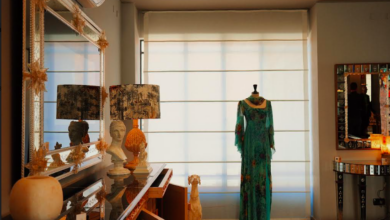Urban development with a special emphasis on eco-responsible buildings has imposed itself as one of the key environmental debates in Egypt's evolution.
Longstanding problems including rampant pollution, overpopulation and poor waste processing, public transportation, access to drinking water and waste water management all need to be integrated in a holistic approach to create a better-functioning, sustainable city.
In this spirit, Dominique Gauzin-Müller, a French architect who specializes in sustainable development, curated the exhibition entitled “Live ecological: what types of architecture for a sustainable city” that is on display at the Palace Amir Taz in Khalifa.
This travelling exhibition has been brought to Egypt by the French Institute in collaboration with the Paris-based Cité de L’architecture et du Patrimoine (City of Architecture and Heritage), the world’s biggest architecture center.
According to the architect, “Buildings play a major role in the global eco-responsible approach because it is the sector that consumes most of the resources.” Hence, the role of architecture as a means to reach a more eco-friendly lifestyle is central and unavoidable.
Gauzin-Müller explains the term “eco-responsible architecture” as an integrated process that combines economic, cultural, social and ecological objectives.
She also puts a strong emphasis on contextual architecture as opposed to international architecture. A building should be integrated in a context and reflect the physical nature of the site it is built on, she says. This includes geographic, geological, topographical and climate characteristics, as well as taking into account the building material available locally, the type of renewable energies that can be implemented and the manufactured goods available nearby.
Gauzin-Müller brought her exhibition to Egypt in part because one of the pioneers of eco-responsible architecture is Egyptian architect Hassan Fathy.
Born in 1900, the architect pioneered environmentally conscious technology for building in Egypt by re-establishing the use of mud bricks, utilizing ancient design methods and re-discovering the aesthetics of Nubian vaults.
He trained locals in Gourna, Upper Egypt to construct their own buildings and is also considered the creator of “passive cooling,” the ancestor of air-conditioning, which he developed by incorporating dense brick walls and traditional courtyards into his designs.
This low-tech type of sustainable architecture with tremendous potential should again be developed in Egypt, according to the Gauzin-Müller. In Upper Egypt for example, the ancient building techniques using local and cheap construction material were extremely efficient in combating the sun by creating cool areas plunged into shade.
“I am convinced that the architecture in earth, not only in adobe, but also in wallow or blocks of compressed earth has a future in Egypt, without using the precious silt, of course,” she explains.
Gauzin-Müller sees tremendous potential in Cairo too.
"The social capital that exists in the city and the solidarity between the residents revealed by the revolution are valuable assets to create a new eco-responsible society," she says.
The human factor is far more essential to the holistic approach she advocates than are the technical aspects. The holistic process is a subtle balance between knowledge sharing, mutual trust, collective intelligence and creative empathy.
Well-aware of the challenges Cairo is faced with and of the Herculean task that lies ahead, she explains that there is hope for sustainable projects as “the city is at the very beginning of an eco-responsible approach, which means that the mistakes made in the West can be avoided.”
Gauzin-Müller perceives a similarity between Europe's Eco-Quartiers and the structure of Cairo’s informal areas with their dense population and their traditional two- to four-story buildings with the ground floor usually dedicated to a trade, shop or service.
She says high-rises are ineffective in preserving space because their foundations are large. But increasing green areas such as Al-Azhar Park and planting more trees should be a priority in Cairo because plants will reduce dust, and these areas are also aesthetically pleasing.
She also advises that the city focus on developing the Nile Valley more widely to introduce a “promenade plantée,” or “walk with trees” that would line the riverbanks with greenery and provide a place for residents to walk, or cycle if bicycle lanes were developed.
Her exhibition is on view at the Taz Palace until 31 May at 27 al-Syoufiya Street, close to the Ibn Tulun Mosque in Khalifa.




